Horses have been domesticated and selectively bred by men for about 5000 years. Horse welfare should not be neglected in any form. They are socially organized and have been utilized by man for food, transport, and work, but are used more commonly now as a companion animal for pleasure and competitive sports. Over the centuries man has selected horses according to traits such as conformation, speed, courage, strength, endurance, and ability to be trained.
Why Do People Keep Horses?
Men keep horses for various reasons. In the now largely urban and mechanized society, few people possess the art of horsemanship or the knowledge of husbandry necessary to properly select, sustain, and educate horses. These guidelines are intended to provide an outline of the principles of horse welfare, husbandry, and management. The most common reasons for keeping horses are as follows:
- Work (Draught, delivery, stock)
- Competition (Racing, eventing, jumping, showing, dressage, endurance riding)
- Pleasure riding or driving.
- Horse Breeding.
- Pets.
- Slaughter for meat and by-products.
Basic Horse Welfare Guidelines
Horses are kept under a variety of conditions, from extensive grazing in the unfenced wilderness to intensive housing in individual stalls. These guidelines recognize certain basic needs of horses, irrespective of the husbandry system, including:
- Readily accessible food and water to maintain health and vigor.
- Freedom of movement to stand, stretch, and lie down.
- Regular exercise.
- Social contact with other horses or people.
- The accommodation that neither harm nor causes undue strain, and provides adequate protection.
- Protection from disease, and regular inspections to assess the need for attention to feet, teeth, and parasite control.
- Rapid diagnosis and treatment of vices, injury, and diseases.
The guidelines emphasize the importance of good horsemanship, pointing out that persons in charge have a legal liability to care for horses under their control. This implies a knowledge of the basic behavioral and physical needs of horses, irrespective of the intensity of husbandry.
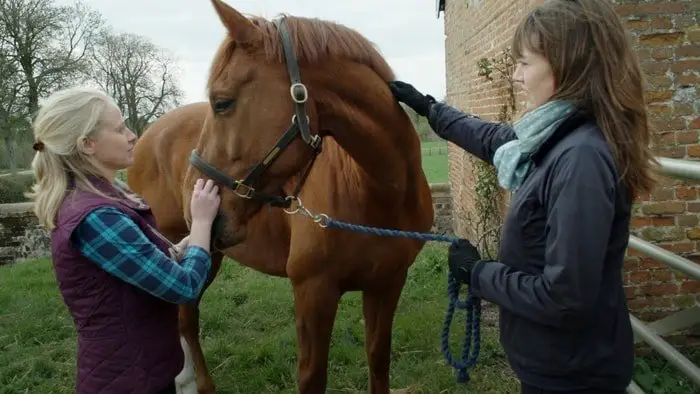
1. Behavioral Needs
The application of sound principles of husbandry requires an understanding of animal behavior. Horses are a social animal that establishes a group of hierarchy; also they may form social bonds with other animals, including humans, They breed, graze, and respond to fight and painful stimuli in predictable patterns, and can develop behavioral problems.
Experienced horsemen and women and veterinarians appreciate the effect that the normal feeding and breeding habits have on the reactions of horses to restraint, and the effects of ill-health on their attitude and movement. The design of facilities, the stocking density, and the composition of a group of horses to have an area of its own.
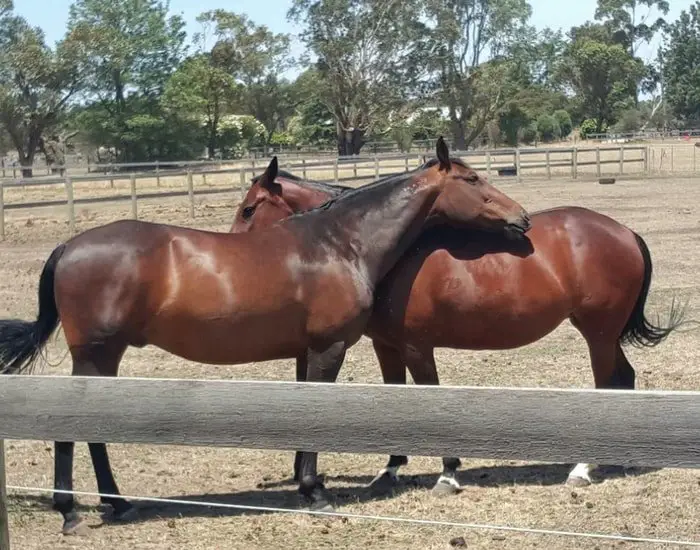
Each horse in a resting group requires about 6 square meters of space. Subordinate horses must have an opportunity to escape from bullying by dominant animals in the group. Colts, stallions, weanlings, pregnant, and sick animals usually require segregation from other groups of horses, to reduce the risk of injury or other diseases.
2. Horse Welfare: Supervision
Frequency and level of supervision should relate to the likelihood of the risk to the welfare of each horse. Horses kept under intensive management in stables and yards should be inspected, fed and watered at least twice a day. Horses grazing under more extensive conditions require variable supervision, according to the density of stocking and availability of suitable feed; the breed type; nature and disposition; age and pregnancy status; and the nature of fencing and reliability of water supply.
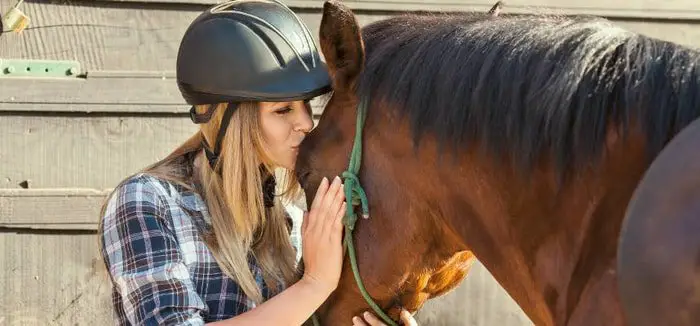
Steps should be taken to ensure that horses can be attended to promptly in the event of fire, flood, or injury. In any situation, the degree of supervision should be comparable with that practiced by a competent horseman for that type of husbandry. Mares in late pregnancy should be observed at least daily for signs of impending foaling.
3. Horse Welfare: Water Supply
Horses require free access to an adequate supply of good quality water. Reticulates water should be inspected daily for normal function during summer, and at least twice a week during winter. A bucket supply of water should be used only where horses are constantly supervised by a person living on the premises and should be replenished at least twice a day.
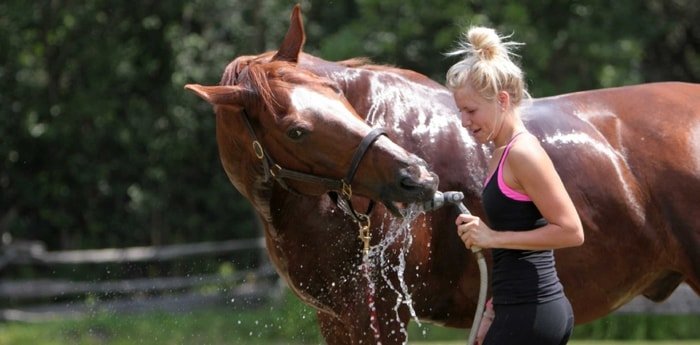
The requirement for water varies widely, depending on age, body weight, air temperature, and humidity, work, state of health, and type of diet of the horses. Where the provision of sufficient water for health and vitality cannot be met, horses should be moved, agitated, sold, or slaughtered on site. Water troughs and containers should be inspected for cleanliness and freedom from contamination, function, and replenishment.
4. The Requirement of Food for Horses
Horses need food that will maintain their health, vitality, and welfare. Food for horses should meet the requirements of growth, pregnancy, lactation, and work. Where the provision of food sufficient for health and vitality cannot be met, horses should be moved, agitated, sold, or slaughtered on site.
If there is no pasture for horses to graze, they should be fed at least once a day. Regular supervision should be provided to observe behavior patterns and responses to feeding. Feed troughs for horses should be spaced to minimize bullying and allow subordinate animals access to feed. Less thrifty horses require segregation and special feeding if they lose body condition and vitality.
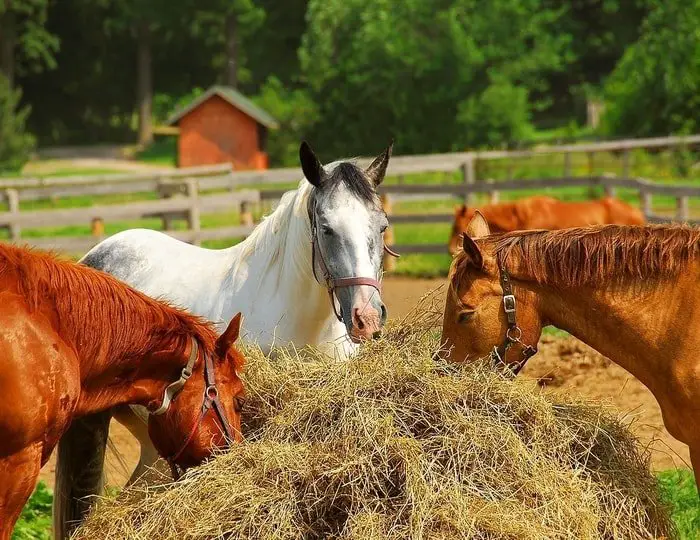
When a horse fails to thrive, the quantity, quality, and availability of feed, and the health of the horse should be evaluated. Care should be taken to protect horses from food harmful to health. Horses should not be overfed. Overfeeding some horses, particularly idle ponies, can induce laminitis or founder. Animals at risk should be exercised and their intake of food energy reduced to minimal maintenance requirements. Affected horses should be moved to more suitable pasture, or confined to yards and fed suitable dry feed.
However, all components of diet essential for growth, health, and vitality should be readily available to horses. Selective reduction in food intake should be undertaken only by an experienced person, or under veterinary supervision. Good quality pastures, containing suitable grasses and legumes, can provide the food requirements for most horses except those doing hard work.
Horses should be fed according to body conditions. Over-fatness is undesirable. Most horses kept in smaller areas, require supplementary feed for some part of the year, depending on the requirement of growth, pregnancy, lactation, and work. Protein, mineral, and vitamin supplements should be provided when required. Horses should have access to salt. Adequate good quality food is necessary for the growth of young horses.
5. Horse Premise: General Requirement
Horse premises should be designed to minimize the risk of injury to horses. There should be an adequate number of paddocks, or yards to permit animals of similar age, sex, size, and compatibility to be grouped. The risk of injury increases where horses are overcrowded and condition for food, water, and space leads to fighting.
6. Fencing
Suitability of fencing varies according to the breed, sex, and disposition of the horses, stocking density, and paddock size. Fences should be readily visible to the horses and properly maintained. Barbed wire, prefabricated wire fencing, and high-tensile wire are prone to cause severe injury to horses and are particularly hazardous when used in small areas.
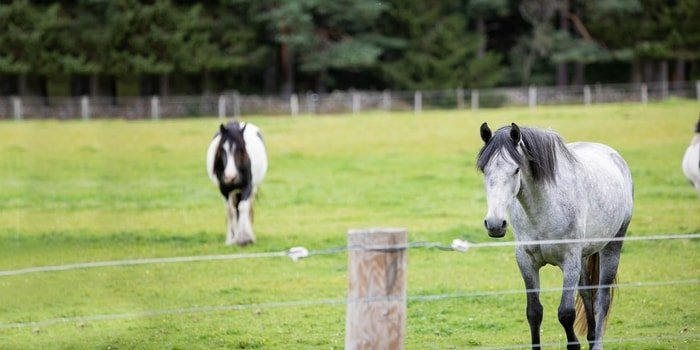
Electric fencing, properly fitted and maintained, provides a safe and effective barrier to horses when used with conventional post-and-wire and post-and-rail fences. Gateways should be designated to give an easy and safe passage of horses. Gates should be fastened with a secure chain or catch, to prevent the escape of horses and possible injury.
7. Accommodation for Horses
Healthy horses can tolerate extremes of heat and cold if they are acclimatized and have adequate feed and water. However, steps should be taken to minimize the effects of climatic extremes and other factors producing either cold or heat stress. Landscape features, such as windrows of trees, hedges, and gullies, provide shelter. Stressed horses should be put in shelter sheds or stables.
Horses clipped during winter should be rugged, except when working or when weather conditions are very mild. Sheds should be constructed and maintained to provide adequate security and minimize the risk of injuries and diseases. Stables and sheds should give adequate natural ventilation. Air vents on opposite sides of the box are preferred.
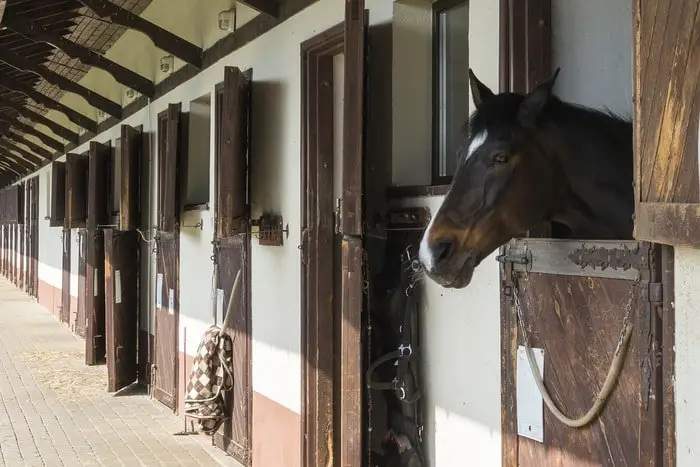
Loose boxes for horses should have a floor area of at least 12 square meters and should be 2.4 meters high. Horses should be accommodated slightly loose boxes and tied if inside stalls. Clean bedding- such as straw, sawdust or wood shaving – should be provided for warmth, insulation, and protection from abrasion.
8. Horse Welfare: Agistment
A wide variety of agistment is available for horses and usually, the degree of care and attention given to agisted horses is in direct proportion to the fee charged. Cheap agistment on pasture is satisfactory, providing horse welfare requirements are met. Services also available are regular supervision, rugging, grooming, stabling, individual feeding, and provision of high-standard facilities and management.
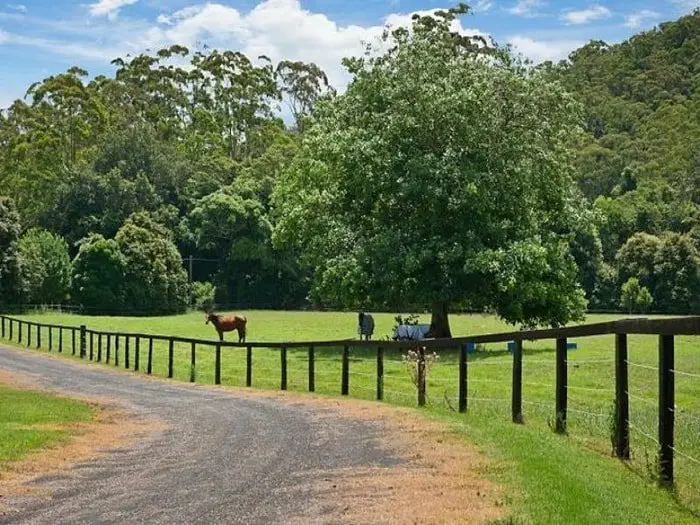
A written agreement defining conditions of the agistment should be made between the horse owner and the agistment property owner. The agreement should state the fee, the service to be provided; the name of the person responsible for the supervision, and provision of feed and water, and the steps to be taken should the horses become sick or injured.
9. General Management of Horse Husbandry
Persons responsible for the supervision of horses should be able to recognize signs of ill-health and should call a veterinarian to diagnose and treat any illness or injury. Horses should be allowed to suffer for want of attention. They should be killed humanly when seriously injured or sick if proper care and attention cannot be provided, or removed to suitable facilities to permit adequate treatment, supervision, and continuing after. The signs of healthy horses are:
- Active, move freely, eat, and drink well.
- Have clear eyes and nostrils, clean skins, and coats.
- They are neither very thin nor overfat.
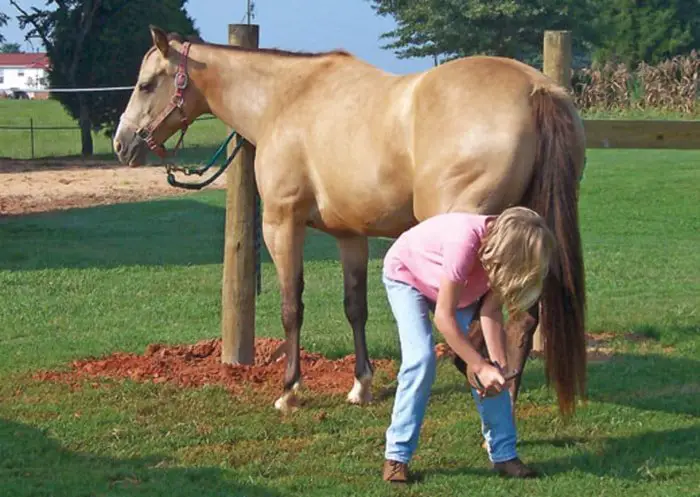
10. The Sick Horses May Show the Following Signs
-
Lassitude and loss of condition; these signs are frequently associated with an inadequate diet, internal parasites, or teeth problems.
- Digestive upsets; seen as diarrhea, with soiling of the tail and hind legs, or constipation or colic with restlessness, pawing, kicking at the stomach or rolling, often accompanied by straining, teeth-grinding, and patchy or generalized sweating.
- Lameness; due to injury, laminitis or founder, foot abscess, or improper hoof maintenance.
- Discharge from eyes, nostrils, or swollen glands under the throat; these are indications of respiratory disease and may be accompanied by cough, fever, and loss of appetite.
- Injuries occur more frequently where horses are over-crowded and facilities are inadequate.
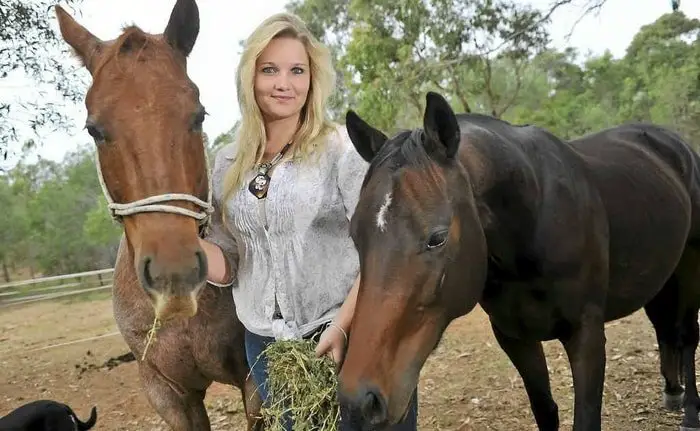
11. Horse Welfare: Responsibility of Person
The person responsible for horse welfare should seek immediate veterinary attention for horses showing the following signs:
- Acute abdominal pain or colic
- Serious injuries, including deep wounds, severe hemorrhage, suspected bone fractures, or eye injuries.
- Straining for more than 30 minutes by a mare that has not been foaled.
- Inability to rise or stand.
- Marked lameness or injuries not responding to treatment within 24 hours.
- Persistent signs of respiratory disease accompanied by loss of appetite.
- Diarrhea or persistent weight loss.
12. Horse Welfare: Education and Training
Persons engaged in educating and training horses should be experienced, or under the direct supervision of an experienced person. Competent horsemen and women recognize the different behavior patterns of horses and successful trainers adapt their training methods to suit the particular horse. Competent persons are confident and instill this confidence in the horses they train. They recognize that most horses respond best to firm but gentle techniques, and to rewards when the horse responds correctly.
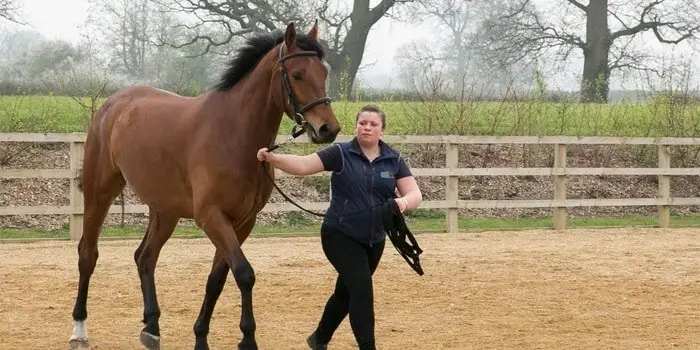
Abnormal psychological and behavioral responses to training and confinement should be recognized and measures are taken to correct them. These responses may include aggression, biting, pawing, kicking, weaving, pacing, crib-biting, or wind-sucking. Occasional disciplinary measures may be necessary to establish the dominance of the trainer and discourage bad habits, such as biting, in the horse. Basic education of the young horses, while desirable, also should be minimal, to reduce risks of injury and growth abnormalities. Immature horses should not be given strenuous training.
Training methods involving cruelty or repeated pain insults should not be used. Horses should be of the appropriate type, be adequately educated, fed and housed, and trained to the degree of fitness for the task to be performed. All saddlery, harness, and other equipment used with horses should be of sound condition, well-fitting, correctly adjusted, and regularly cleaned, so that the risk of injury to the horses is reduced.
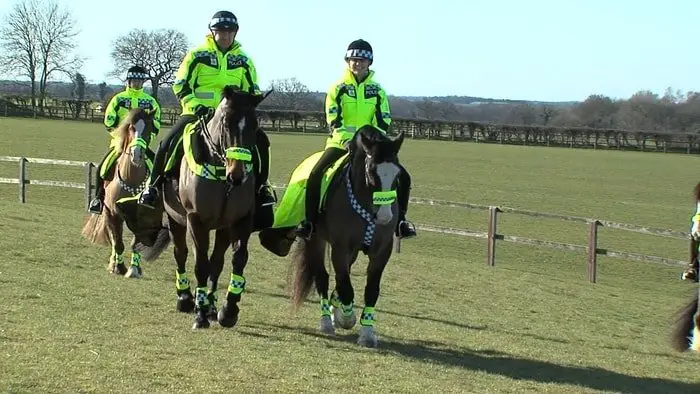
Horses require regular exercise for weeks before they are adequately conditioned for strenuous exercise. All horses, including well-trained animals, can be over-ridden. Experience and skill are required to ride or drive horses to their utmost ability in competitive horse sports without including distress, severe illness, or death. Veterinary attention should be sought if there is any doubt about the fitness of a horse for a particular purpose.
13. Guide to Education and Training of Horses
- Foals less than four or five months of age may be handled to accustom them to being caught and led, and to being confined within a yard, stall, or horse float when accompanied by their mothers.
- After weaning ( usually between five and seven months of age), foals may be accustomed to having their legs and feet handled, and to be tied up and confined alone.
- Horses should not be broken to ride or drive until they are aged between 15 and 18 months of age.
- Training and conditioning of young horses for competitive purposes requires considerable skills and experience. Inexperienced persons should not be ride or drive horses younger than 18-24 months of age regularly.
- The selection, training, and care of horses used for work and competition are complex arts and skills.
- There are great variations between types of horses, types of uses, and training methods.
- The various aspects of the industry have evolved satisfactory methods and guidelines to protect the welfare of horses used in those areas.
- Persons involved in the education and training of horses should be familiar with the average industry requirement for age, suitability, and fitness of horses used for a particular purpose.
14. Horse Welfare: Foot Care
The horse’s hooves should be trimmed as required to permit normal mobility. Horses are ridden or driven on roads or hard surfaces should be shod. Shoeing should not provoke any abnormality of gait or conformation. Hot shoeing should be practiced only by experienced farriers. Hooves of horses in work should be inspected each day for signs of injury, loose shoes, or impacted stones. Shod horses should be inspected at least every six weeks for replacement or adjustment of shoes. Shoes should be removed or inspected regularly when horses are not in use for a particular purpose.
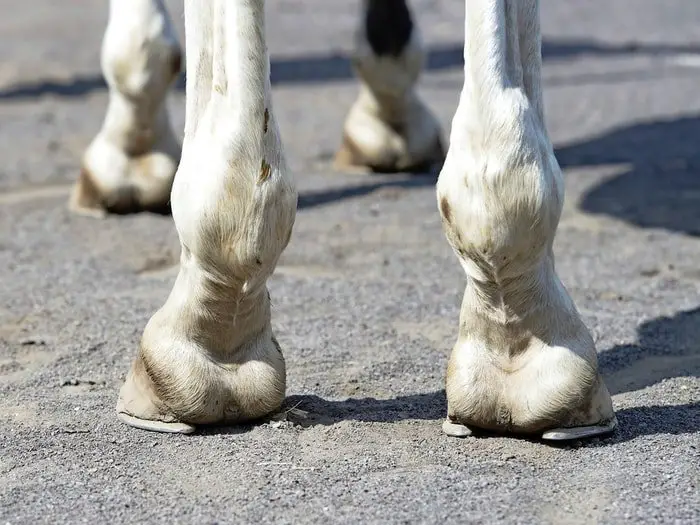
15. Horse Welfare: Treatment Procedures
Effective management and treatment of horses involve using various forms of restraint. These will vary with the temperament, disposition, and previous learning experience of the particular horse, the nature of the management procedure, and the skill of the horseman. Restraint methods used on horses should always be the minimum necessary to carry out routine management procedures. Prolonged or over-zealous use of restraints, such as nose-twitches, may cause a severe reaction from many horses.
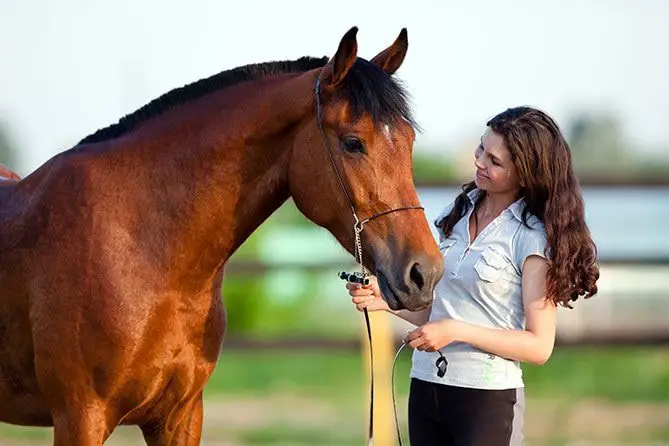
Adequate facilities to provide a safe environment, and suitable equipment, should be available when horses are subjected to any procedure or treatment. Management and treatment procedures should be performed by a competent person. Treatment practices that cause pain should be performed by a competent person and under the influence of suitable analgesia. Treatment practices that cause pain should not be carried out on horses if painless or alternative methods of treatment can be adopted
16. Identification of Horses
Lip-tattooing and skin branding are acceptable methods of identifying horses. Hoof fire-branding is acceptable as a short-term procedure. Freeze-branding and fire-branding are the usual methods of permanent identification. Horses should be branded before weaning and as early as management practices allow, by persons experienced in such practices. Horses should not be branded using corrosive chemicals.
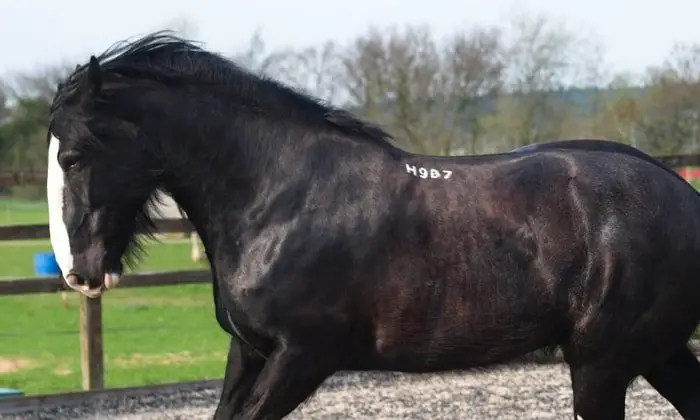
17. Horse Welfare: Surgical and Medical Procedures
Horses of any age should not be castrated without the use of an appropriate anesthetic or analgesic agent. The surgical procedure should be performed and anesthesia is given only by, or under the direct supervision of a registered veterinary surgeon.
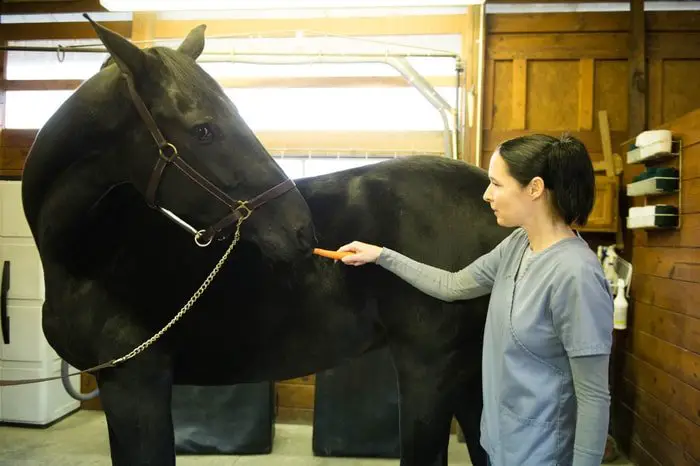
Internal medicines such as vaccines, drenches, food additives, and external medications such as liniments, lotions, and insecticides, should be used strictly by the manufacturer’s instruction-overdosing may harm horses; underdosing may be ineffective. Treatment should be administered hygienically.
18. Horse Welfare: Protection from Diseases
Routine vaccination of horses against tetanus is desirable. Owners should seek veterinary advice about vaccination against other diseases. Prompt appropriate treatment should be given to horses for diseases that may be common in a district or occurring in a mob. Routine treatment for internal worm parasites and early treatment of external parasites such as lice should be practiced. The effectiveness of treatment should be evaluated by veterinary examination if the response to routine treatment is poor.
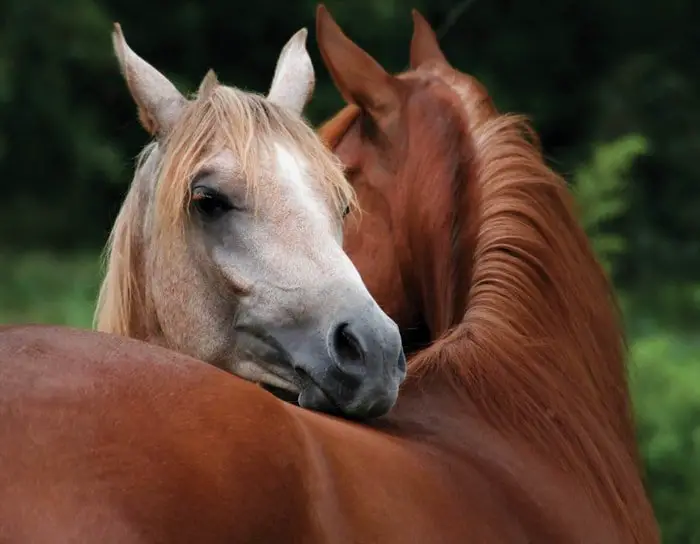
Good hygiene and cleanliness in and around stables, including disposal of effluent and litter, will reduce the risk of parasitism and diseases. Paddock used for grazing horses should be managed in such a way that contamination by parasites or other agents is minimized. Good management practices include spelling paddocks for intervals of at least six weeks and preferably 12 weeks, or grazing with other species such as sheep and cattle.
19. Responsible Ownership
Indiscriminate breeding of horses, or breeding of horses of a type or temperament unsuitable for a specific purpose, is undesirable. Prospective purchasers and breeders of horses should be aware that proper feeding, maintenance, and training of horses represent long-term responsibilities. Many welfare problems are created when owners neglect animals that may have little economic value.
20. Horse Welfare: Euthanasia or Slaughter
Euthanasia or Slaughter of horses should be performed humanely. The acceptable methods are rapid intravenous injection of concentrated barbiturate solutions; it should be noted that tissue residues will render the carcass unfit for human or pet consumption if this technique is used, shooting; using a fire-arms, or humane killer, and use of captive bolt pistol. Euthanasia or slaughter should be performed only by persons trained or experienced in the method used.
Horses should not be overcrowded when held at premises for slaughter. They should have free access to water and sufficient food to provide normal energy requirements for maintenance. Facilities for handling horses should be designated to minimize injury and provide security. The Yard surface should enable easy cleaning and provide safe footing for the horses.
21. Horse Transport or Horse Boarding
Horses are prone to injury during transport. Appropriate training and conditioning reduce the risk of injury. Unbroken or unhandled horses should not be transported alone or in dual horse trailers. Horses unaccustomed to being transported should travel only in the company of other horses.
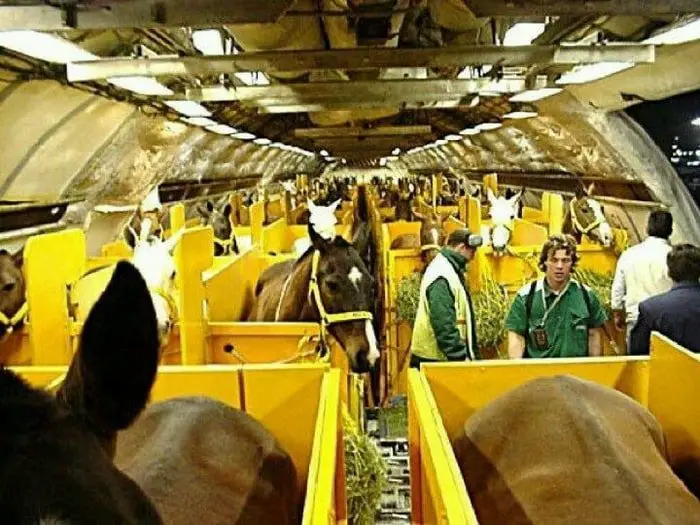
Young or unbroken horses frequently travel best when loose-penned in small groups. Other horses should be fitted with head-stalls and leads should be secured to the vehicle, using a quick-release knot, so as not to endanger the animals. It is recommended to transport in separate pens: a group of unbroken horses, stallions, mares in advance pregnancy, mares with foals, and horses significantly different in size or type.
The Final Talk on Horse Welfare
Horse welfare is the most important information that must be known by every horse owner, trainer, caregiver, veterinarian, and educationist. In my article, I have tried to cover almost all relevant welfare and management information for horses. I think you will be benefited to read this article. You must share with your friends who are working with horses.